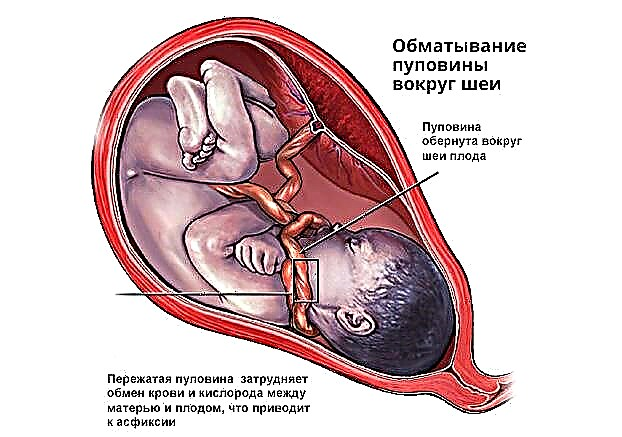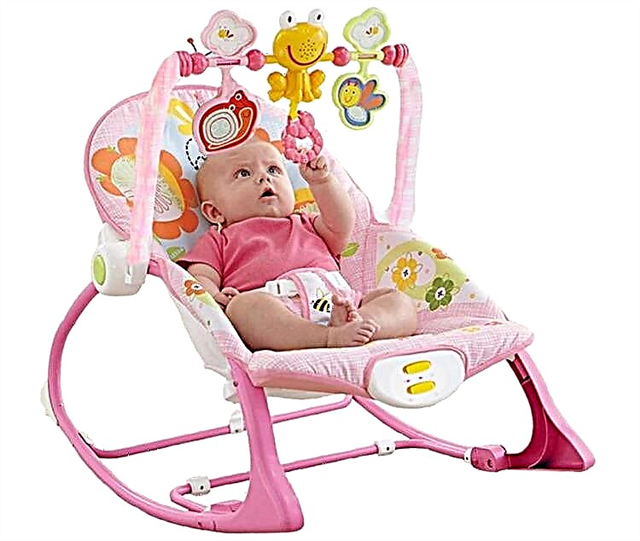Porridge is an important and necessary baby food product. More and more pediatricians are inclined to ensure that complementary foods begin with cereals. Useful in its effect on the digestive system and rich in microelements, this product must necessarily be at the heart of the baby's menu. Porridge for the first feeding can be prepared on your own or purchased in packages. When introducing such complementary foods, parents should know when to start giving the baby porridge and how to do it without problems.

At what age to give
You can include cereals in baby food from 6 months of age. Bottle-fed babies can begin complementary foods at 5 months.
Experts say that the time of introducing cereals into the child's diet depends on the individual pace of his development, physical condition, and the absence of allergic reactions. If the child is not gaining weight well, then you need to start with cereals, if the weight pushes well, then with vegetable purees (links to rules below).
Before indulging their crumbs with cereals, parents should consult with a local pediatrician. The doctor will advise which porridge is best to start with, how much to offer, what to look for.
We read about the beginning of complementary foods:
- The first complementary foods for babies who are breastfed
- The first complementary feeding of formula-fed babies
Rules for the introduction of cereals
So that complementary foods do not turn into troubles on the part of the digestive system, it is important to follow the basic rules:
- For the first feeding, you should give preference dairy-free one-component porridgewhich does not contain gluten, sugar, GMOs, fructose and other artificial additives;
- Most babies tolerate rice and buckwheat well. After the baby learns them, you can expand his menu with corn and wheat porridge;
- It is recommended to start complementary foods with the "packaging" options available in pharmacies and children's supermarkets. Why? There are a number of explanations for this: their composition is balanced; they are designed for a specific age; they are hypoallergenic; they can be prepared quickly and conveniently, having previously read the instructions and recommendations;
- With a good assimilation of dairy-free cereals and the absence of allergies, after 4-7 weeks, gluten-free dairy can be introduced, the nutritional value of which is much higher.
How to give
Baby cereals offered to a child for the first time should be 5 percent (5 g cereals per 100 ml water)... This condition is necessary in order for the consistency of the porridge for the first feeding to be optimal.
You need to give porridge with a teaspoon. It is advisable to use rubberized spoons, which are specially designed for the baby's delicate gums. The optimal time for complementary foods is breakfast.
Important!
It happens that a child refuses to eat complementary foods from a spoon, may refuse cereals, so we wrote for you an article on how to deal with this.
Here, we wrote how to teach a child to eat from a spoon - we read.
[sc: rsa]
The introduction of complementary foods usually starts from 0.5-1 tsp. rice or buckwheat porridge. In terms of consistency, the gruel should resemble mashed potatoes. It is important to ensure that there are no lumps in the product offered to the child. After complementary feeding, the baby is offered breast or milk formula.
Every day, increase the amount of porridge offered to the child by 1 teaspoon. On the second day of complementary foods, the child should be offered 2 tsp, on the third day - 3 hours, etc., until a single serving is 150 g. A one-time intake at 7-8 months should be 160-170 g, at 8 -9 months - about 170-180 g. Closer to the year, a single serving should be 200 g. Do not forget that each child is different and takes certain foods in a different way. This also applies to the volume that the baby can master in one go.
Within 7-10 days, the consumed volume is gradually brought to 100-150 g. For 2 weeks it is recommended to give the child one type of porridge. Over time, the consistency should already be 10% (10 g of cereal per 100 ml of water). Only with good tolerance and the absence of allergic reactions and other troubles can one proceed to the introduction of the following type.
Varieties of children's cereals
The most suitable option for the first feeding is dairy-free cereals. They are free of sugar, milk, starch, gluten, and other additives. The composition of dairy-free cereals is ideally adapted to the child's digestive system, which has not yet matured for the digestion of solid food.
Buckwheat... Due to the content of protein, iron, magnesium, vitamins B1 and B2, buckwheat is considered a valuable cereal and should be an indispensable product in the child's diet.
(Cooking buckwheat porridge)
Rice porrige.A product rich in healthy dietary fiber. Many parents mistakenly think that eating rice can cause constipation in children. However, it is not. Rice flour, which is used to make baby food, does not contain crushed rice and does not cause constipation.
(Cooking rice porridge)
Corn porridge... Even rice is superior in nutrients. Rich in protein, iron and fiber.
Oatmeal... It is considered useful due to plant protein and minerals (calcium, iron, magnesium, vitamins B1, B2, PP). The amount of fat and fiber contained in oatmeal is 6 times higher than their content in other cereals.
(Cooking oatmeal)
Experts in the field of baby food recommend the introduction of cereals in the following order: 1 - rice; 2 - buckwheat; 3 - corn; 4 - wheat; 5 - oatmeal.
For each type, it is advisable to adhere to the established regime of administration - 2 weeks. Only after that, with normal assimilation, you can start introducing another porridge.
Most modern moms use packaged products for complementary foods.
- First of all, it is fast, simple and convenient.
- Secondly, baby food manufacturers supply proven, high-quality and balanced products, fully adapted for the child's body.
- Thirdly, you can choose hypoallergenic, gluten-free and dairy-free cereals, which significantly reduce the risk of developing allergies in your baby.
However, some mothers prefer to cook porridge for their child on their own.
We cook ourselves
Having decided to cook porridge at home, it is important to know how to cook them. The following tips will help you:
- Porridge for baby food is boiled only in water!
- Before cooking, grits are ground with a blender or coffee grinder.
- Cereals are taken at the rate of 5-10 g per 100 ml of water.
- The optimal consistency after that can be achieved by adding formula milk or breast milk to the gruel.
- You don't need to add sugar and salt.
(3 recipes, see above)
Rating of children's cereals
Children's supermarket windows are full of a variety of food products. Parents are often lost and do not know which brands of cereals are better to choose. The rating of cereals below will help you navigate the choice.
- "Nestle".
- "Gerber".
- "Neinz".
- "Hipp".
- "Friso".
- "Baby".
- "The baby".
(We will write separate reviews about each company)
Before making a choice in favor of a particular food product, it is advisable to carefully read the composition. So, some manufacturers add milk powder, flavorings, emulsifiers, fructose, sucrose, vanillin and other substances that can cause allergies in a child to children's food products.
An important guideline will be how the baby accepts this new food and how his body reacts to it. If everything is in order, there is no reason to worry!
We read further:
- 5 recipes for the first soups for babies
- We introduce vegetable purees;
- We introduce meat complementary foods.
More video about porridge:

 We read about the beginning of complementary foods:
We read about the beginning of complementary foods: Important!
Important!

